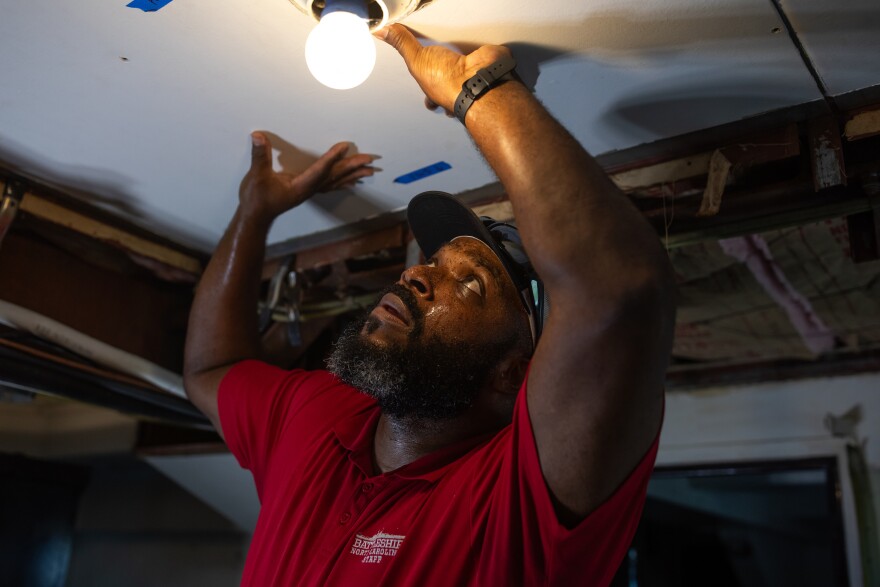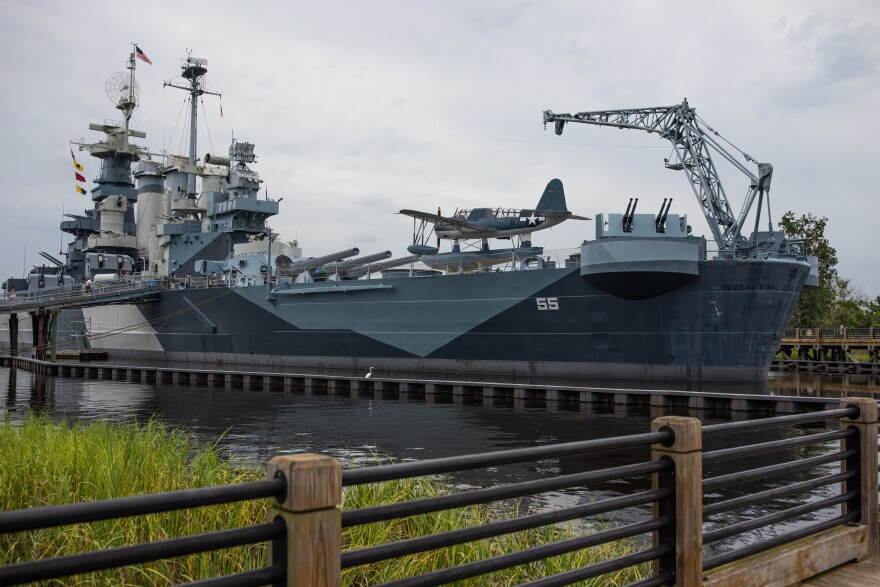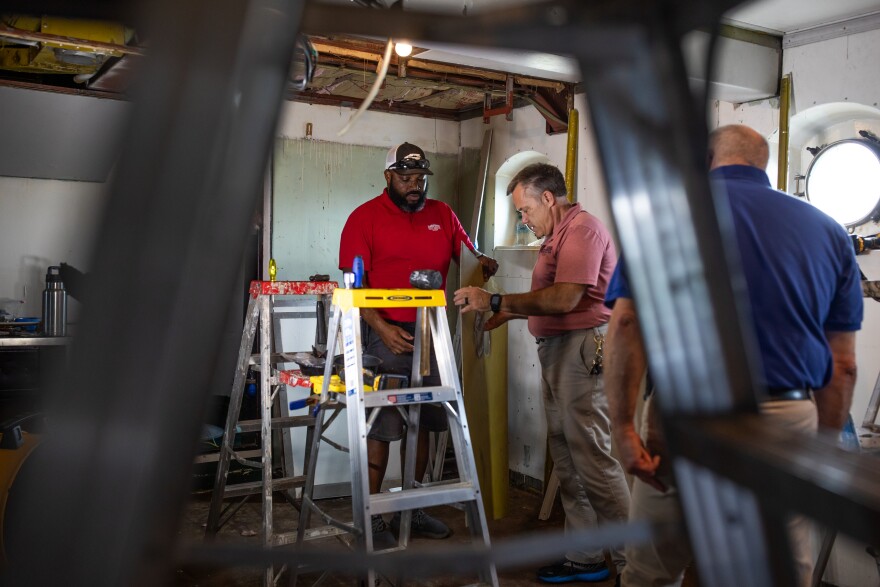The U.S.S. North Carolina is a piece of living history on the west side of the Cape Fear River — where children can often be seen aiming the anti-aircraft guns at buildings downtown. Built in 1937, the battleship was America's first fast battleship built for the needs of the Navy during World War II, said Executive Director Jay Martin.
"Our ship will be the first of the capital ships that will achieve its centennial. And so not only are we that, but we're also the most decorated of the world war two battleships and capital ships," he said.

But it takes a lot to keep the battleship in, if not fighting shape, then something pretty close. Recent tropical storms have caused substantial water damage to a prominent office: The admiral's cabin. Once a stately room that allowed for dignified meetings between ambassadors, the space is now a work site.
Martin said, although they’ve received state grants for repairs in the past, this time the funding has to come from admissions and other revenues, like donations. That's long been the primary method of paying for the ship's maintenance and other needs. "One of the typical repairs to our steel decks is to put plating over steel that is damaged, right, that's deteriorating.”
That kind of repair was more common in the past: an effort to keep as much original steel as possible. But one of those repairs failed during that PTC #8 last fall, when 20 inches of rain fell on some parts of the Cape Fear region. Terry Kuhn, the maintenance director for the battleship, says the water flooded the Admiral’s cabin. Half the room is still that well-appointed, carpeted meeting room, while the other half is a bare steel floor and steel beams, the paneling pulled off to facilitate the replacement of a steel plate above.

"The space above us is like an open-air passageway around the outside that they could they could walk around, look out some portholes, and see what's happening. And so it's protected from the weather," Kuhn explained. But during PTC #8, the wind drove water up the passageway, right to a spot of degraded steel. He called it a freak accident. "It pushed it up inside that covered walkway area, and it just flooded in here. So the ship's leaning a little bit to this side, and there was about two inches of water in the corner, which thoroughly soaked the carpeting, so we had to rip all that out," Kuhn said.
Terry and his crew replaced the degraded steel of that walkway — fixing a poorly conceived repair from decades ago - previous workers on the ship would just put new steel over the top of degrading original steel.

"It's a lot easier if you can just put a piece on top of it, but then all you're doing is trapping the rust underneath the new piece of steel, and then the new piece of steel will rust out from the inside and on top, because people will eventually walk the paint off," he said.
That was the noisy part. Now, it’s the meticulous work of putting all the panels back together in the exact right order.
"They built it extremely well, and it all goes together like a jigsaw puzzle, and a lot of the pieces fit so precisely," Kuhn said. This team is dedicated to using as many original parts as possible. They’ve kept every screw, every piece of wire, and that’s what they use to put the new insulation in place: wire wrapping screws, just how they did it in the old days.
Sometimes they even find old cigarette butts and notes in unseen places, Kuhn said, gesturing to one panel with looping cursive in two different sets of handwriting.
"So that was a note from one shipyard work to another. It says, 'Tony, see that plates are painted before you put them up on starboard side.' And then Tony, I guess, scratched down there and wrote 'all done,' when he was done," he told WHQR.

Once this admiral’s cabin is put back together, the maintenance crew has found another section of degraded steel to replace. Director Martin says it’s a never-ending battle to keep the U.S.S. North Carolina in tip-top shape, especially as it fights against rising storms and rising waters.
"A ship like the battleship North Carolina was built, really, for about a 20-year lifespan, and we're coming up on her 90th birthday," Martin said. "So from a practical standpoint she's beyond her active service life. So one of the challenges for us, who are curators and historians, is to be able to maintain the ship in a way that allows it to continue forever. It needs to exist forever.”

It’s a beloved monument, with dedicated volunteers, and visitors who remember fundraising with nickels and dimes as school children to help the state buy it from the U.S. Navy.
The ship stands as a testament to the lives of the 11,000 servicemen from North Carolina who died during WWII. And for that reason, Martin and his crew consider it their sacred duty to preserve it.



